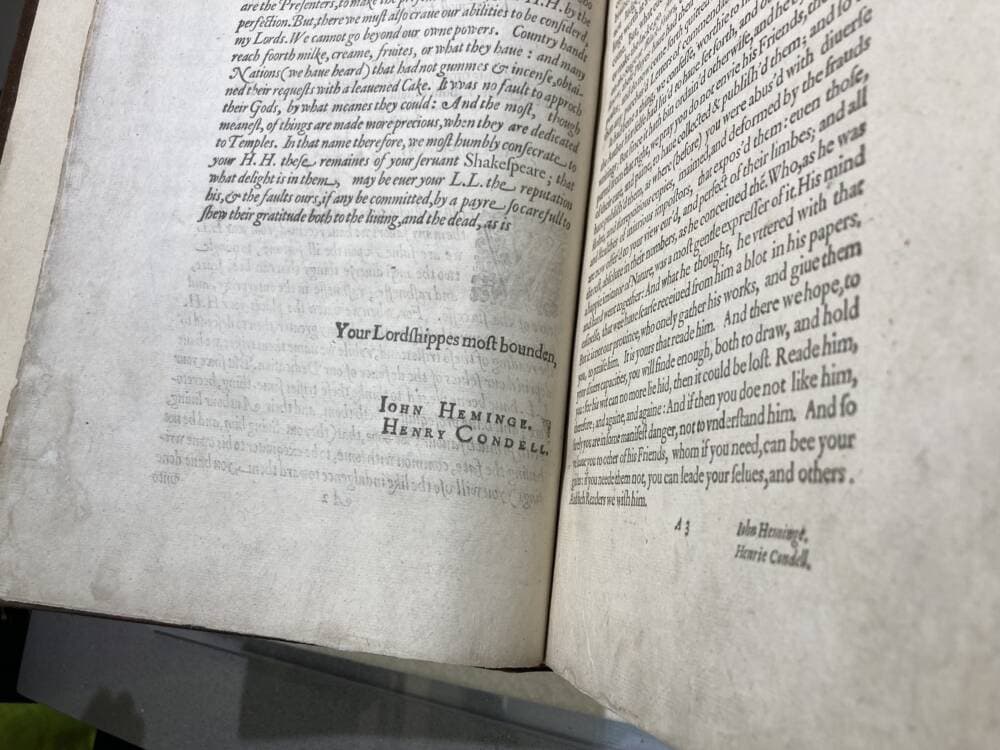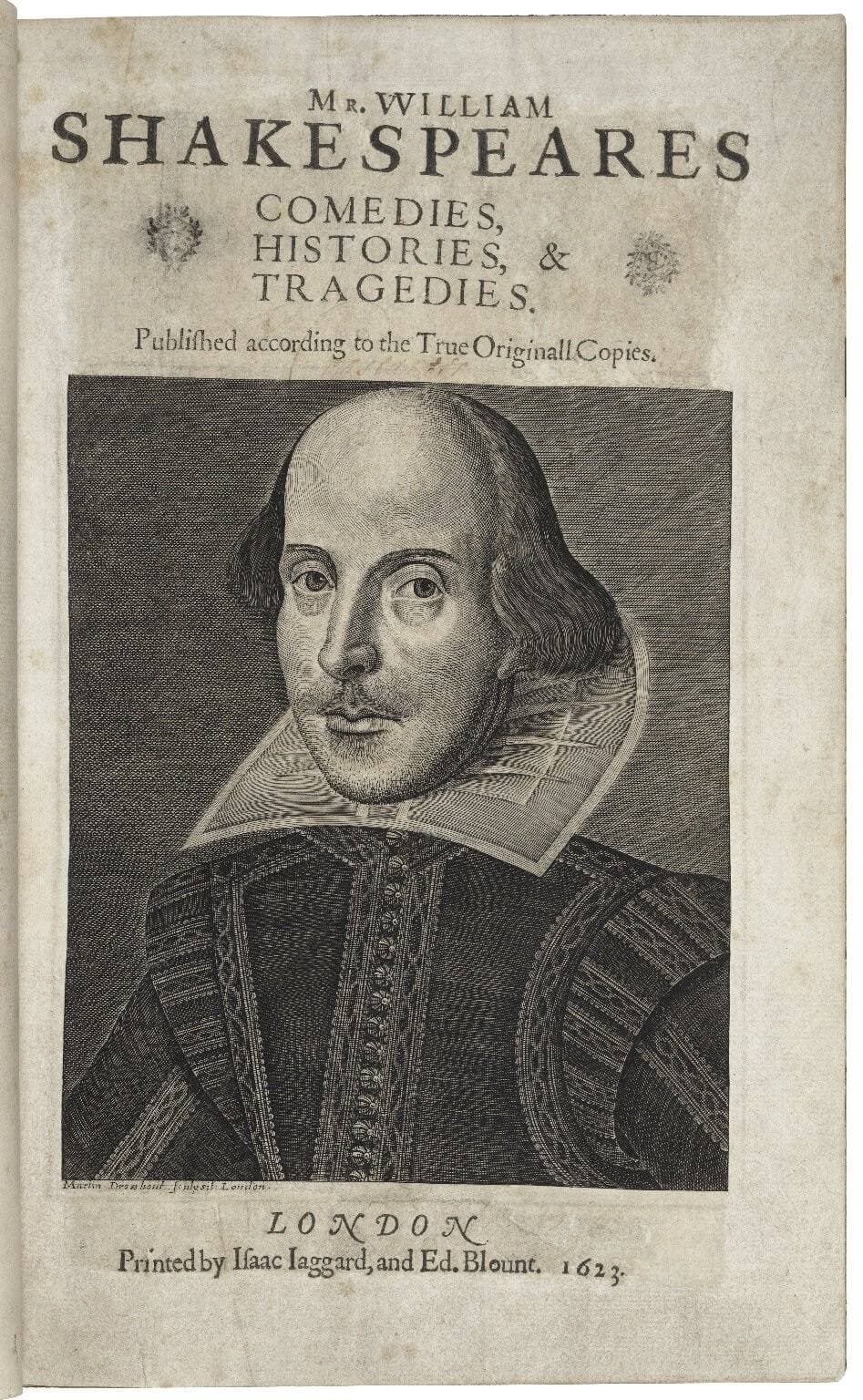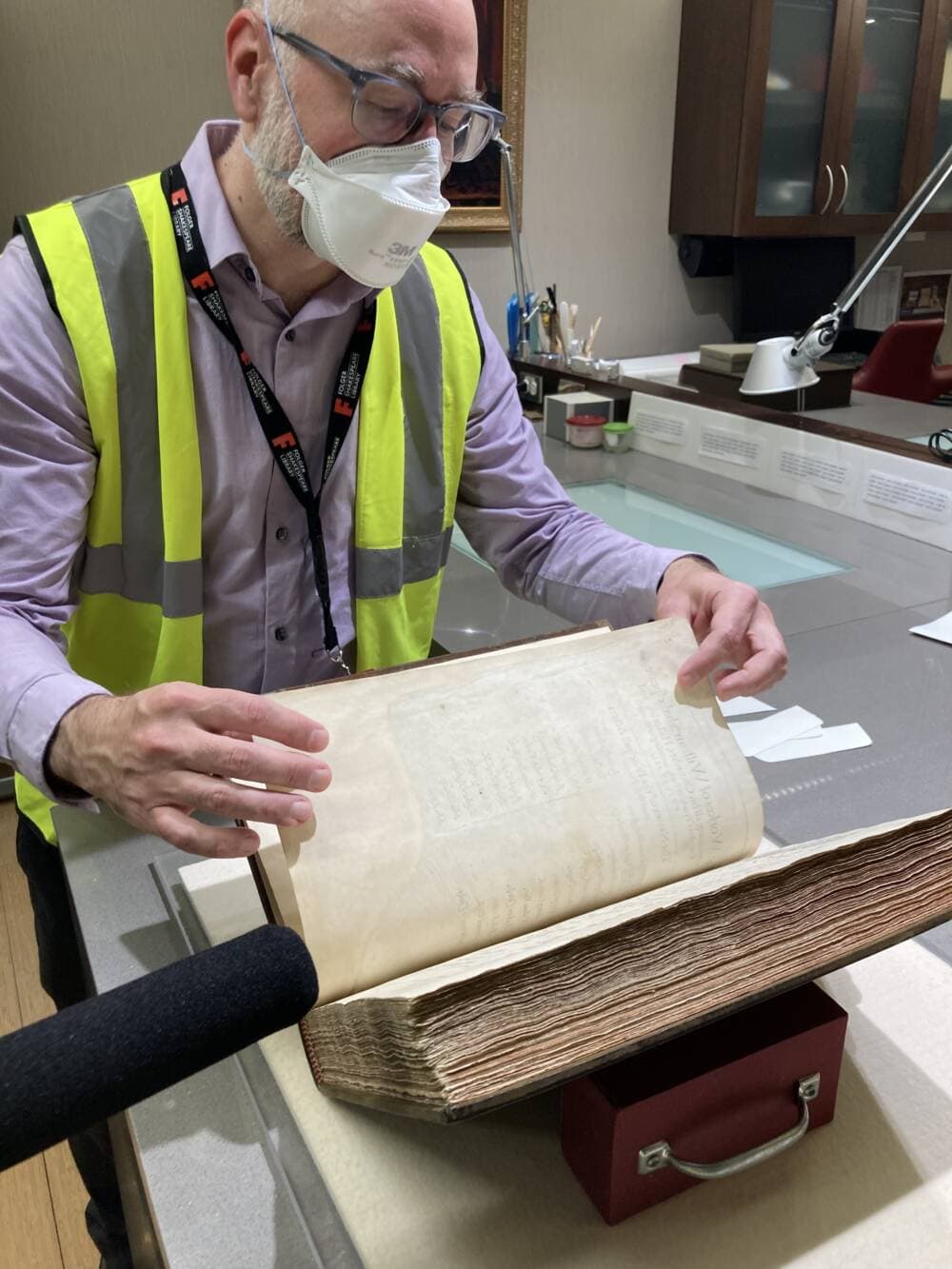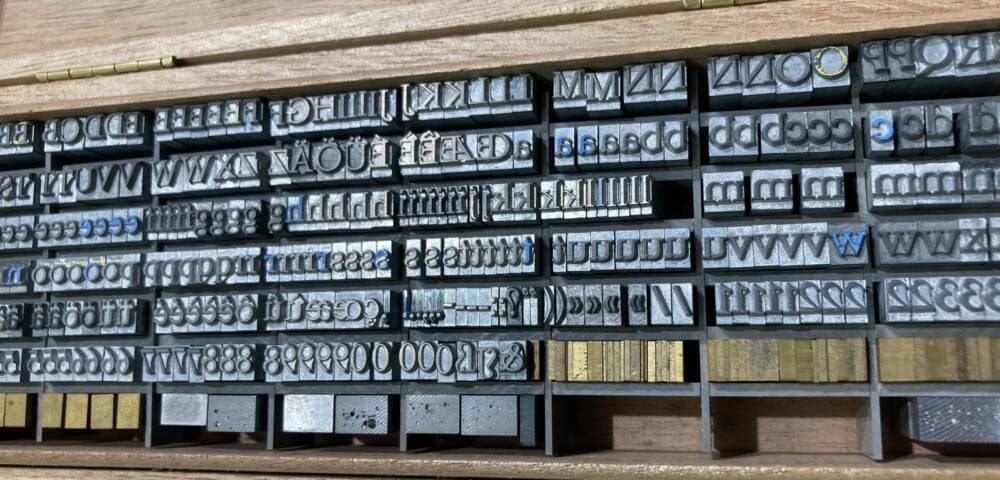Advertisement
400 years after Shakespeare's first folio publication, Folger Library to display all 82 owned copies

William Shakespeare’s friends and close collaborators succeeded at publishing his works in a huge book — the First Folio — 400 years ago, . The Bard had been dead for nearly a decade, and without the Folio, we likely wouldn’t know about 18 of his plays — histories like “Julius Caesar,” tragedies like “Macbeth” and comedies like “Twelfth Night.”
Only 235 copies of the First Folio are known to have survived — making them some of the most valuable books in the world. One of them is now on sale at the New York Antiquarian Book Fair — where it may go for millions of dollars; The last one at auction sold for nearly $10 million, beating expectations.

The Folger Shakespeare Library won’t be competing to acquire the book. Thanks to a buying spree that founders Henry and Emily Folger made over a century ago, the library already owns 82 copies.
“I think obsession is a good word,” says Greg Prickman, Folger’s director of collections. “There were points in the Folger's collecting where in correspondence there's this sense of, ‘Well, maybe we should slow down. Maybe that's enough.’ And Henry Folger said at one point, each copy has a reason for its existence.”
So the Folgers kept at it, and today the research library they founded houses the largest Shakespeare collection in the world. It opened in 1932 in Washington, D.C. across the street from the Supreme Court and the Library of Congress’ Jefferson building.
Each First Folio has its own history. Prickman showed Here & Now’s Scott Tong a particularly large edition that was almost thrown out.
“This particular copy was discovered in the 19th century on a shelf in essentially a building associated with an English country house, where somebody was cleaning it out and came upon it and tossed it down to the person that was there with them and said, ‘This one's nothing. It's only old poetry.’”
Turning over the pages, Prickman explained that the book had gotten changed and “sophisticated” over time — a process where damaged leaves would be grafted with others to complete the volume. Imagine a patchwork skin like Frankenstein’s creature.
Advertisement

“[Book] dealers had what they called morgues, where they had damaged copies of books, where they could supply leaves to perfect and sophisticate other copies that they could then market as complete,” Prickman says. So really, when you get down to that sort of leaf by leaf examination of these copies, almost all of them have been manipulated, changed, improved over many, many years."
The edition we saw — Henry Folger’s favorite — will be featured in an upcoming, permanent display at the library, set to open to the public on Nov. 17.
The library plans to exhibit all 82 copies in a renovated underground space, “purpose built with both appropriate climate, but also the ability to control light in a way that we really didn't have before,” says Ruth Taylor Kidd, Folger’s chief financial officer overseeing the construction.
The project has been 13 years in the making, and is open to everyone, free of charge.
“We've added elevators, we've eliminated barriers, and we really made the space accessible to all audiences in a way that it wasn't before,” says Taylor Kidd. “That's absolutely the point, is to eliminate the intimidation and to make sure that everyone knows that they're welcome here.”

For his part, Prickman hopes that displaying all 82 copies of the First Folio will prompt visitors to consider how Shakespeare’s words have been passed down through the years and the new meanings they might take on.
“I want people to be asking questions and to be looking around and discovering something that they're understanding in a new way,” says Prickman. “I want families to come in. And for a kid to be running through that space and taking it in, discovering the images that are going to be on the walls, the way that we're going to sort of envelop you in this collection and the things that we have here”
James Perkins Mastromarino and Katherine Swartz produced and edited this interview for broadcast with Gabe Bullard. Perkins Mastromarino also adapted it for the web.
This segment aired on April 27, 2023.